Holman’s CSB Ancient Faith Study Bible provides commentary and articles from the early Church fathers from the 2nd-5th centuries. Names include Irenaeus of Lyons, Clement of Alexandria, Ambrose of Milan, Augustine of Hippo, Athanasius of Alexandria, John Chrysostom, Jerome, Origen, Justin Martyr, Tertullian, and many more. It includes their biographies and their thoughts on theological issues. I’m reviewing ISBN: 9781535940504, made in China.
Holman provided this Bible in exchange for an honest review. I was not required to give a positive review, only an honest one. All opinions are my own.
_________________________________________________________
This Bible is available at (includes some affiliate links)
and many local Bible bookstores
_________________________________________________________
Table of Contents
- Video Review
- Cover and Binding
- Paper
- Typography
- Book Introductions
- Study Material
- Concordance
- Maps
- Conclusion
Video Review
Cover and Binding
The cover is tan Leathertouch (imitation leather). It has an old-world design with a solid tan front that’s bordered with a darker brown and a gold line design around the perimeter on the front and back. The spine has the logo, text, and non-raised rib indications stamped in gold. It’s perimeter-stitched. The tan has the look of an old book and darkens around the edges. I love this design. It keeps the idea of ‘ancient’ and does it with elegance.
The liner is paste-down. It’s dark with a patterned design printed in gold. It’s Smyth sewn. The cover is stiff and will need to be used a lot before it will stay open flat in the first few pages. It had no issues in Genesis.
The overall size is 7.25 x 9.5 x 2″ and it weighs 3lbs, 6.1oz. It has 2 ribbons: 1 tan and 1 brown. They are thin but they’re long enough to pull to the edge to open the Bible. The colors match perfectly with the cover.
Paper
The paper has a deep cream color to match the ancient book design. It’s around 36gsm and it’s highly opaque. The rough texture is easy to grab and turn. It does have some show-through, but that’s only noticeable where there isn’t something printed in the same place on both sides of the page. It has no glare under direct light. Even with the cream color, I find it easy to read in dim light.
There are a few lined pages for notes in the back.
Typography
The interior was designed and typeset by 2K/Denmark. It’s a double-column design with footnotes under the text divided by a line, and commentary notes in three columns at the bottom of the page. The header shows the book name and chapter in the outer column and the page number in the inner column with a line drawn across the center. Highlights are in red.
The font is Bible Serif. The text is 10.25 and the notes are 8-point. The print is dark and consistent. It’s a black-letter text. The chapter and verse numbers, header text, drop-cap, callouts, and names in the notes are in a dark red. Old Testament quotes are in bold. The text and the notes are printed with line-matching. It has around 8-10 words per line. Poetic settings look nice with this word-count. They include breaks between thoughts.
Each book has a red decorative drop-cap for the first word of the book. They’re simple letters with styled floral designs around them. They take five lines and look elegant. I wouldn’t mind seeing more of them throughout the text.
Book Introductions
Book introductions take a page. They cover what a lot of the ancient writers have said. They also provide a lot of Scripture references. It doesn’t include a bibliography in the introduction. The book introductions include:
Circumstances of Writing – this covers what the Bible says about the author of the book and what ancient writers have said about the author of the book. It mentions the possible dating of writing and how they came up with that date. It also talks about the audience.
Contribution to the Bible – this covers the major themes and things that make the book unique.
Structure – this covers how the book is divided into its major sections. It works like an outline, but in written form.
What an ancient writer has said about the book – it uses a different ancient writer for each book. Sometimes it’s just on a single passage. These are presented as if the writer is writing this section of the book introduction. I’m not sure if they’re exact quotes that were translated into English. They do seem to be exact quotes. It doesn’t provide information in the book introduction about where it is a quote from in the introduction, but it does include a list if resources in the front.
Study Material
The commentary and writings are from the writings of the church fathers of the 2nd-5th centuries. The articles and notes do include a lot of theology. As always, I recommend using it for reference and do your own study prayerfully. A list in the front shows where each of the writings came from. They were compiled from ancient writers such as:
- Ambrose of Milan
- Athanasius of Alexandria
- Augustine of Hippo
- Cappadocian Fathers
- Clement of Alexandria
- Irenaeus of Lyons
- Jerome
- John Chrysostom
- Justin Martyr
- Origen
- Tertullian
Study notes – this has commentary on specific passages from ancient writers. It provides the reference in bold black, the writer’s name in red all-caps, the commentary, and then a reference at the end to show where the quote came from.
Articles – these highlight a key selection from one of the early Church fathers on a theological point.
Biographies – these are biographies of 25 of the most influential patristic Church fathers. They include a short history, heresies they faced or argued with, and how they responded to those heresies.
Twisted Truth – these show how some ancient thinkers drifted from orthodoxy. It provides information about the person, beliefs, date, etc., and provides refutations of those beliefs.
Confessions Quotes – it has 25 confessional quotes by the Church fathers placed throughout the text. They’re printed in red and include the writer’s name and quote reference. They’re printed within a styled box to stand out from the text.
Creeds – in the back is the Apostle’s Creed and the Nicean Creed.
Suggested Reading – this is a list of books for further study.
Biographical Index – this is an index that provides a list of the ancient writers. It includes some biographical information about each one. It also works as an author index by providing a list of Scripture references where their writings are used for commentary. This makes it easy to find commentary from individual writers.
Concordance
The concordance is 108 pages with 3 columns per page. It has character studies and lots of entries. Entries include the part of speech. This is a good concordance for study and sermon prep. It’s especially helpful since this isn’t a cross-reference edition. Here are a few example entries with their number of references to help you compare:
- Christ – 35
- Christian – 2
- Faith – 34
- Faithful – 15
- Faithful Love – 8
- Faithfulness – 6
- Faithless – 1
- God – 77
- Goddess – 2
- God-Fearing – 1
- Godless – 1
- Godlessness – 2
- Godliness – 6
- Godly – 4
- Praise(N) – 8
- Praise(V) – 5
- Pray – 14
- Prayer – 6
Maps
It includes 8 full-color maps on thick non-glossy paper. I like these colors. They show distance, topography, mountain peaks, routes, cities, major roads, Scripture references, location on the globe, kingdoms, locations of events, dates, etc. They’re easy to use and are annotated well, which is helpful since it doesn’t include an index to maps.
Maps include:
- The Migration of Abraham
- The Route of the Exodus
- The Tribal Allotments of Israel
- The Kingdoms of Israel and Judah
- Israel in the Times of Jesus
- The Ministry of Jesus Around the Sea of Galilee
- The PAssion Week in Jerusalem
- Paul’s Missionary Journeys
Conclusion
Holman’s CSB Ancient Faith Study Bible is an excellent resource to see the writings of the early Church fathers from the 2nd to 5th centuries and to see the doctrine they taught and opposed. The 2K/Denmark design and ancient look of the Bible are gorgeous. I love the old look of the cover, paper, and drop-caps. The CSB (Christian Standard Bible) is readable with the large and dark font even with the cream paper. This is a good Bible for any student of God’s Word that’s interested in ancient commentaries.
_________________________________________________________
This Bible is available at (includes some affiliate links)
and many local Bible bookstores
_________________________________________________________
Holman provided this Bible in exchange for an honest review. I was not required to give a positive review, only an honest one. All opinions are my own.

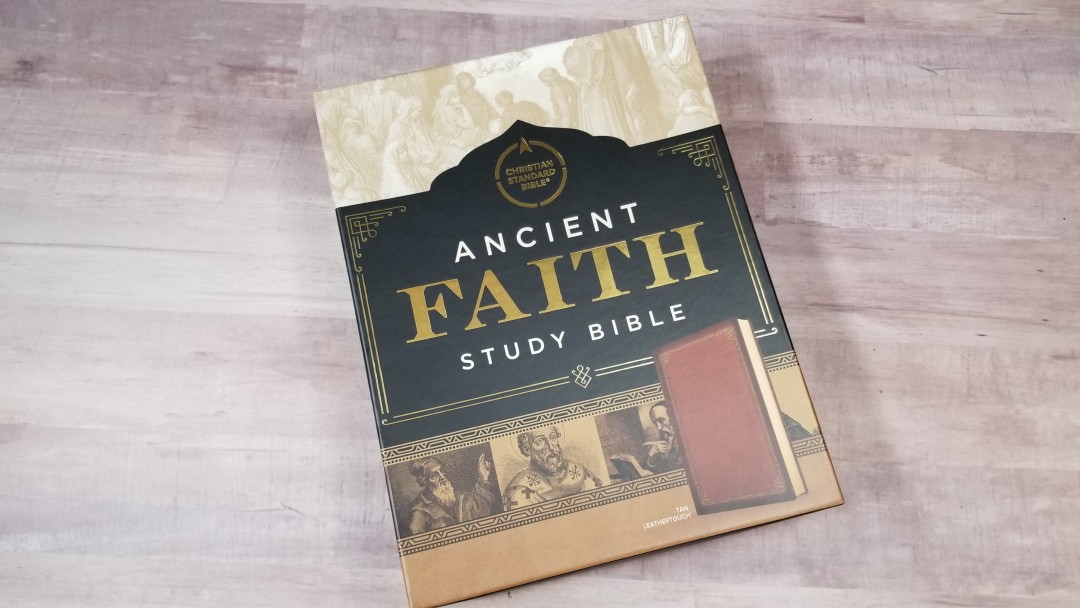
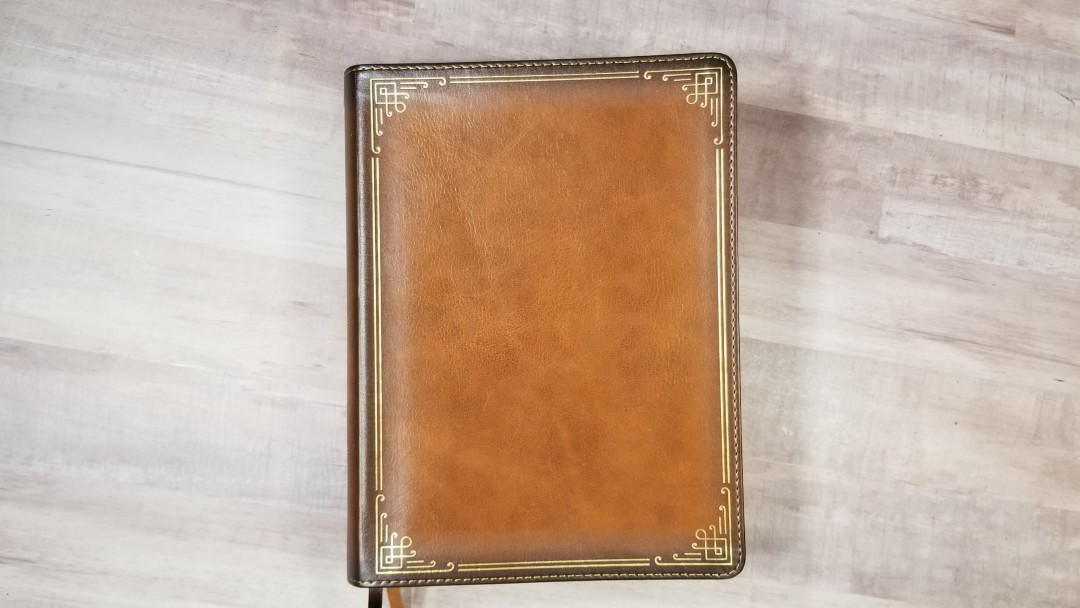
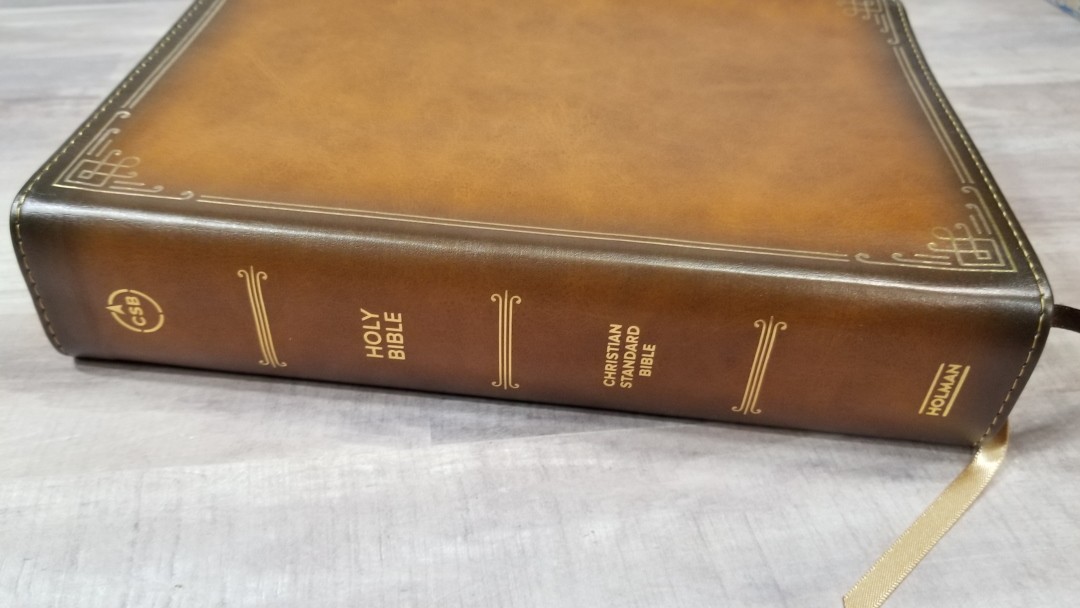

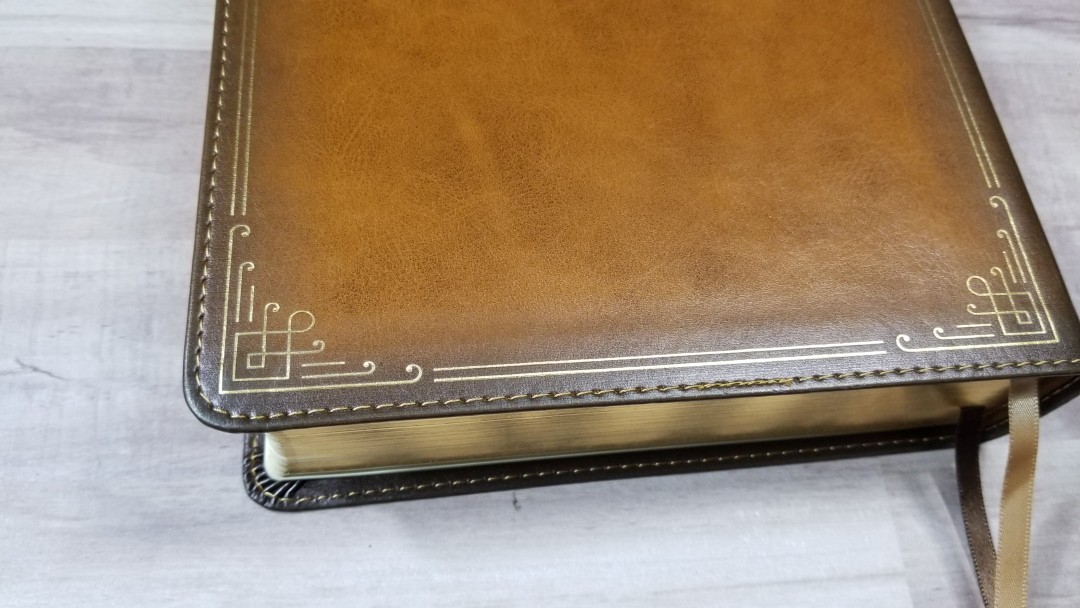



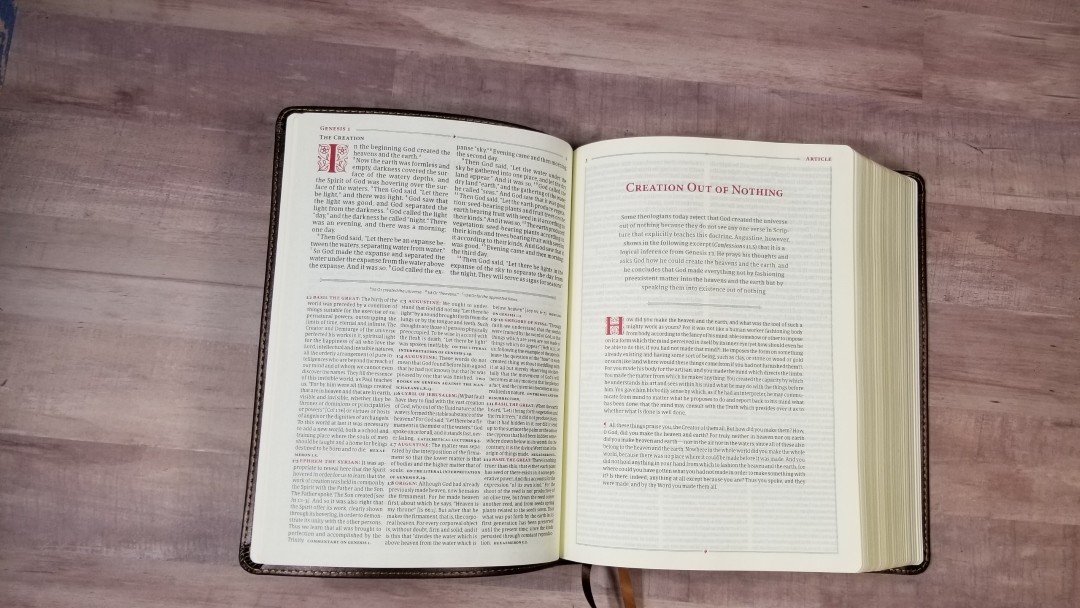
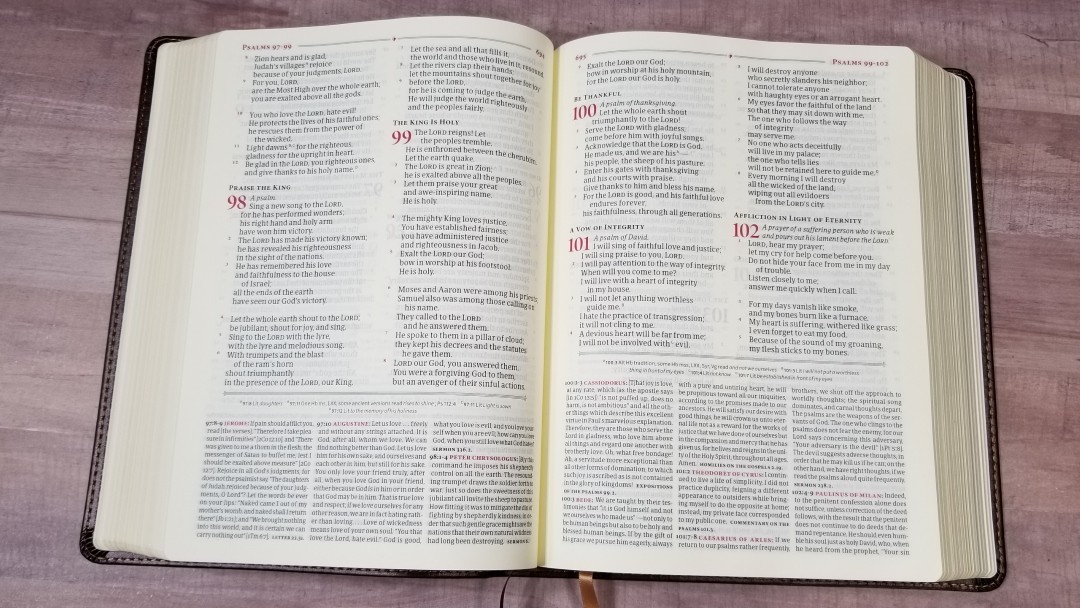


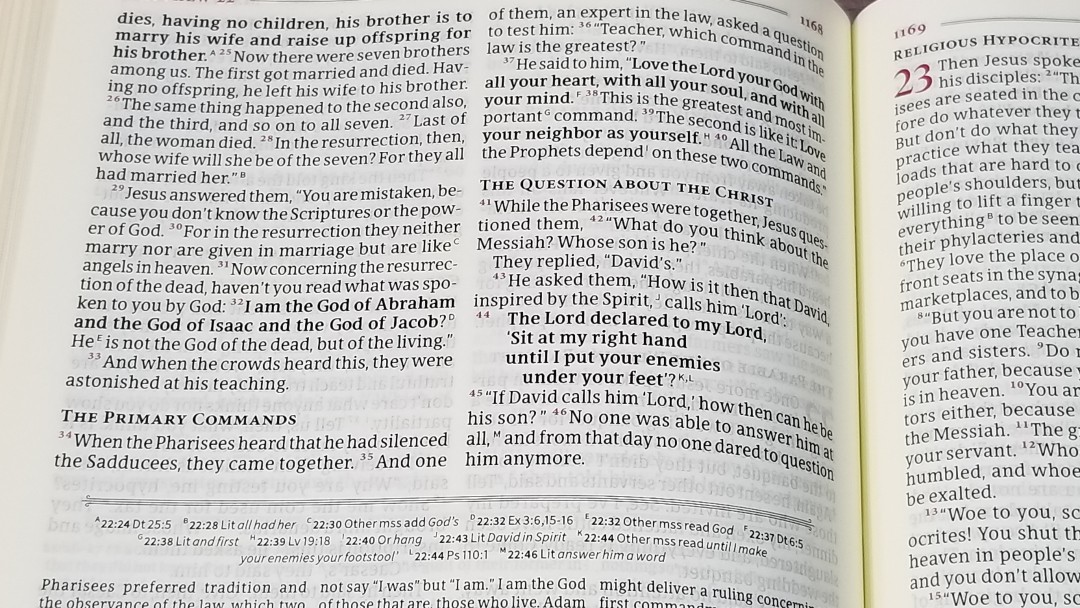


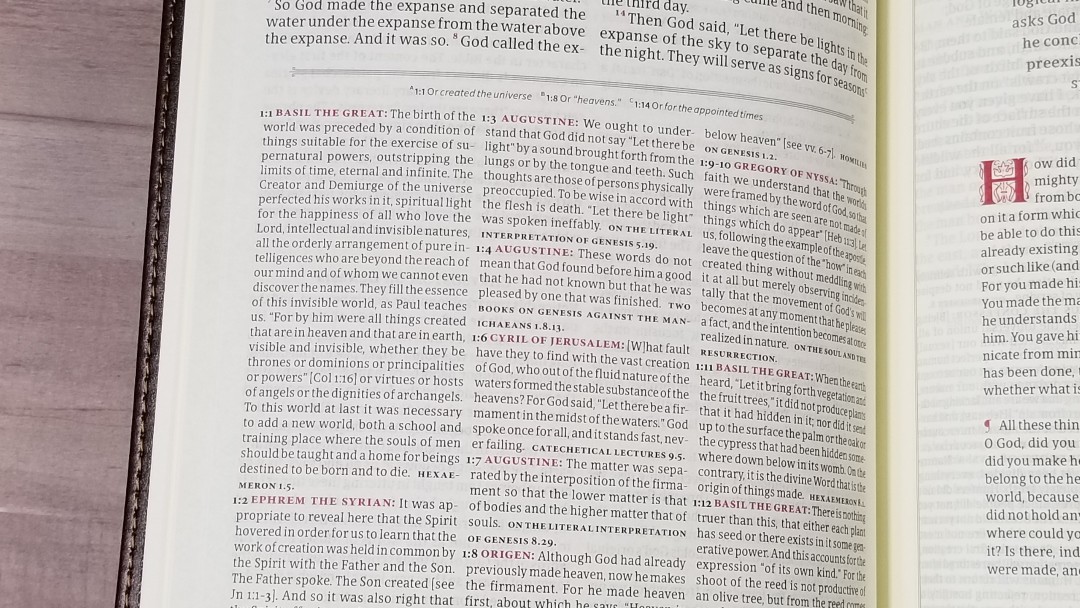

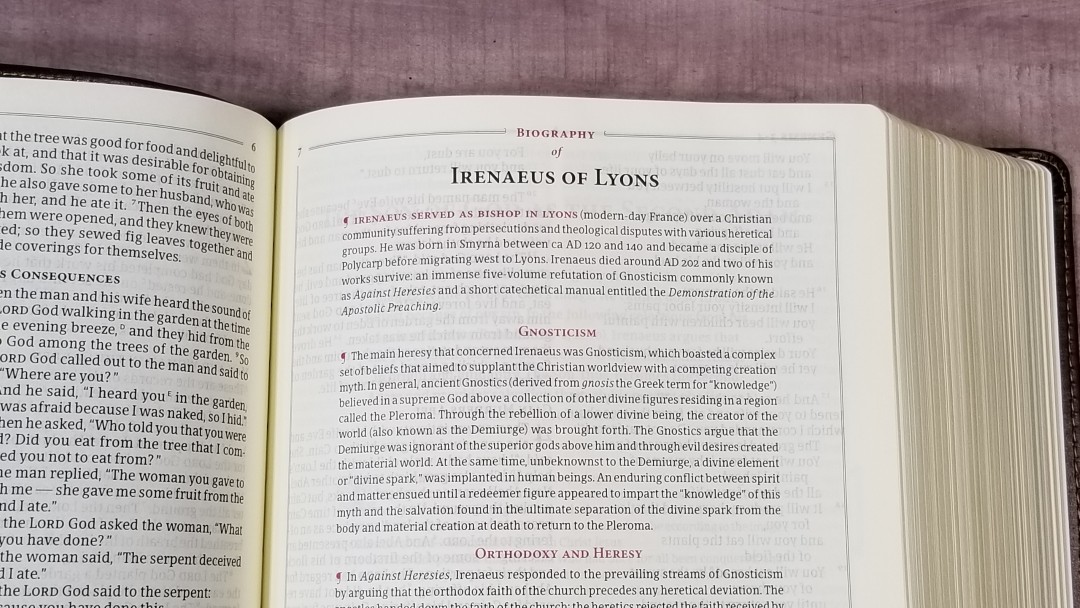


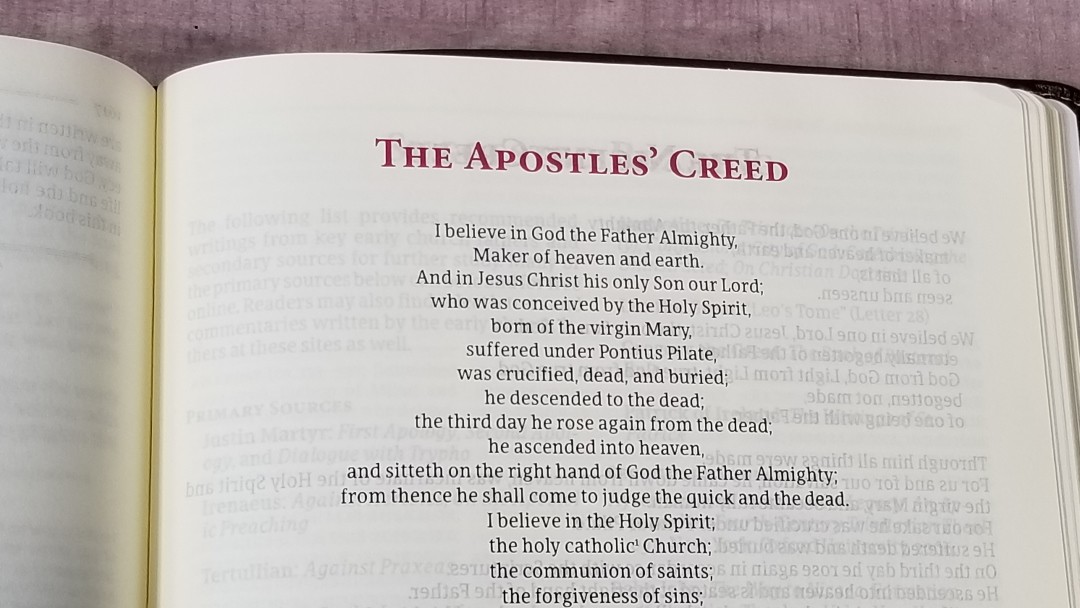

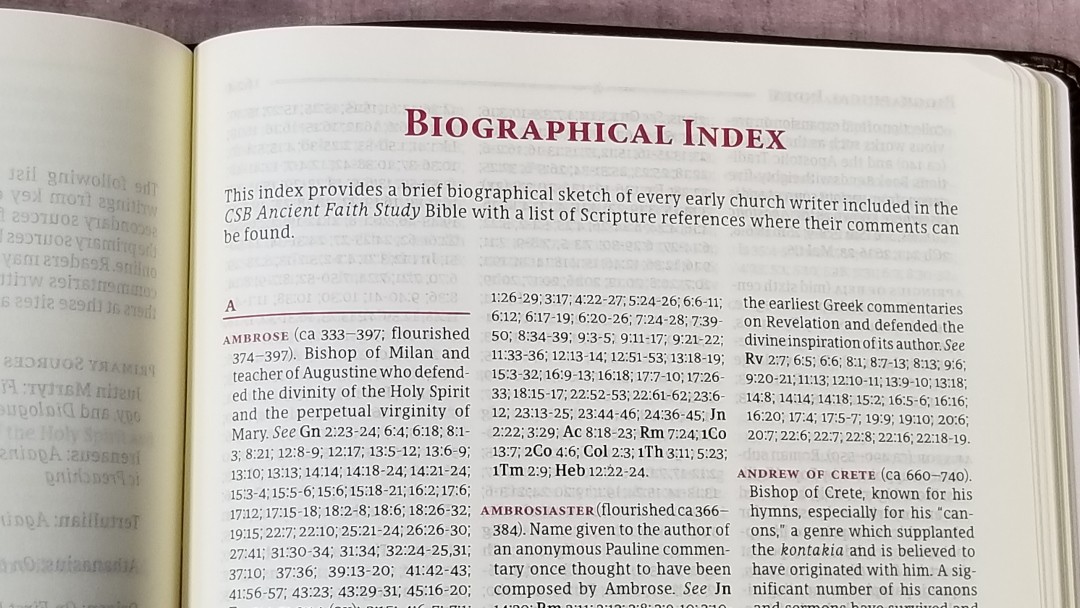





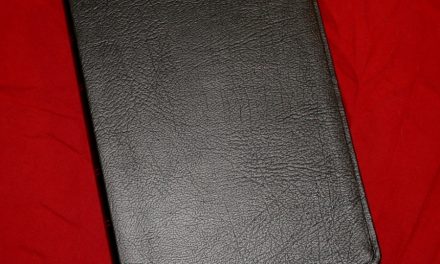
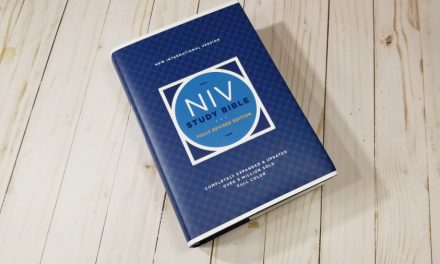


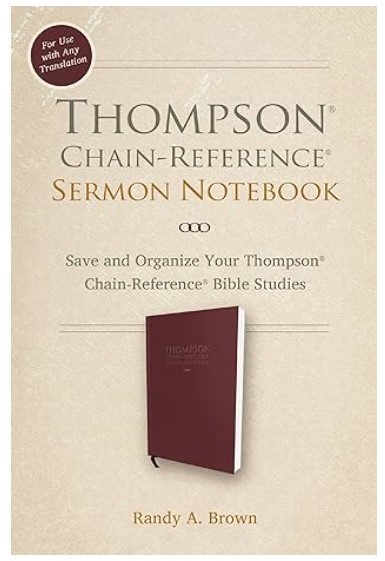



Randy, You’ve bowled me a googly (Google it on Wiki!)!
I had not expected to be tempted by another CSB, having already been prompted by you to purchase the Study Bible.
But, this is an unusual Bible and does offer several benefits; and it seems to be well made, and is attractive.
It is clearly heavily biased to Trinitarianism; but even this convinced Biblical Unitarian can see profitable use of it – not least, perhaps, to hold a series of seminars on its “Twisted Truths” comments! (The one you highlighted in your video, on Adoptionism, seems to me to be inadequate and perhaps even erroneous; but it would make a good starting point for study or seminar.)
So, I think that I’m going to have to save up a few shekels a buy it!
Well done!
Thank you!! I don’t agree with all the notes myself, but like you, I find it good for study and teaching.
The inclusion of the Apostles’ and Nicene Creeds intrigue me! The former is the substance (following its earlier format as the Old Roman Symbol) of the baptismal creeds used among many churches in an era before Trinitarian controversies; and even I can subscribe to, and use, it! The latter is shown not in its original AD 325 form but in its (supposedly AD 381 but not apparent until AD 451) form! But, again, another useful teaching tool! What *noticeable* is the lack of the “Athanasian” Creed – I suppose because it falls outside the period covered by the Bible, but not being a Creed favoured by even many Trinitarians!
How would you judge between Thomas Nelson’s NKJV Ancient-Modern Bible and this one, Holman’s CBS Ancient Faith Study Bible? Thanks!
Thank you for this excellent review! I am a student of God’s Word and especially the Fathers of the Ancient faith.